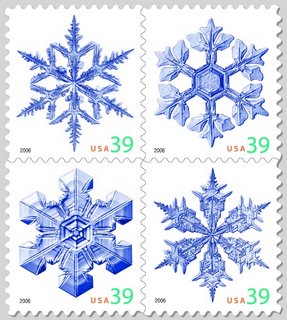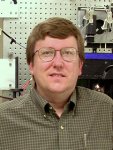Ken Libbrecht & Physics of Snowflakes

For several years Libbrecht has been investigating the basic physics of how patterns are created during crystal growth and other simple physical processes. He has delved particularly deeply into a case study of the formation of snowflakes. His research is aimed at better understanding how structures arise in material systems, but it is also visually compelling and, from the start, has been a hit with the public. His snowflake website, snowcrystals.com, is getting about two million hits a year. He is also the author of a new book, Ken Libbrecht's Field Guide to Snowflakes, a 112-page guide for anyone who wants to know more about the many different types of snow crystals and how to find them.
 Libbrecht began his research by growing synthetic snowflakes in his lab, where they can be created and studied under well-controlled conditions. Precision micro-photography was necessary for this work, and over several years Libbrecht developed some specialized techniques for capturing images of snow crystals. Starting in 2001, he expanded his range to photographing natural snowflakes as well.
Libbrecht began his research by growing synthetic snowflakes in his lab, where they can be created and studied under well-controlled conditions. Precision micro-photography was necessary for this work, and over several years Libbrecht developed some specialized techniques for capturing images of snow crystals. Starting in 2001, he expanded his range to photographing natural snowflakes as well.This interesting research project was aimed essentially as a case study of the growth of ice crystals from the vapor phase, the purpose of which is to better understanding pattern formation in nonlinear nonequilibrim systems. The diverse morphologies seen in snow crystals are largely due to the bizarre temperature dependence of ice crystal growth rates, a phenomenon that was discovered 75 years ago and remains unexplained to this day. Libbrecht has been making precise measurements of the growth rates of the different facets of ice crystals under controlled conditions to gain insights into the temperature dependent molecular structure of the ice surface and how it affects crystal growth.
Libbrecht can grow many different snowflake forms at will in his lab, but says there are still many subtle mysteries in crystal growth that are of interest to physicists who are trying to understand and control the formation of various materials. A real-world application of research on crystals is the growth of semiconductors for our electronic gadgets. These semiconductors are made possible in part by painstakingly controlling how certain substances condense into solid structures.
Libbrecht's research activities are not limited to snowflakes. He is also involved in the Laser Interferometer Gravitational-Wave Observatory (LIGO), an NSF-funded project that seeks to confirm the existence of gravitational waves from exotic cosmic sources such as colliding black holes. In LIGO, Libbrecht has lots of professional company; in fact, the field was essentially founded by Albert Einstein, who first predicted the existence of gravitational waves as a consequence of general relativity. Kip Thorne and Ron Drever at Caltech, along with Rai Weiss at MIT, were instrumental in initiating the LIGO project in the 1980s.
Labels: Condensed Matter

0 Comments:
Post a Comment